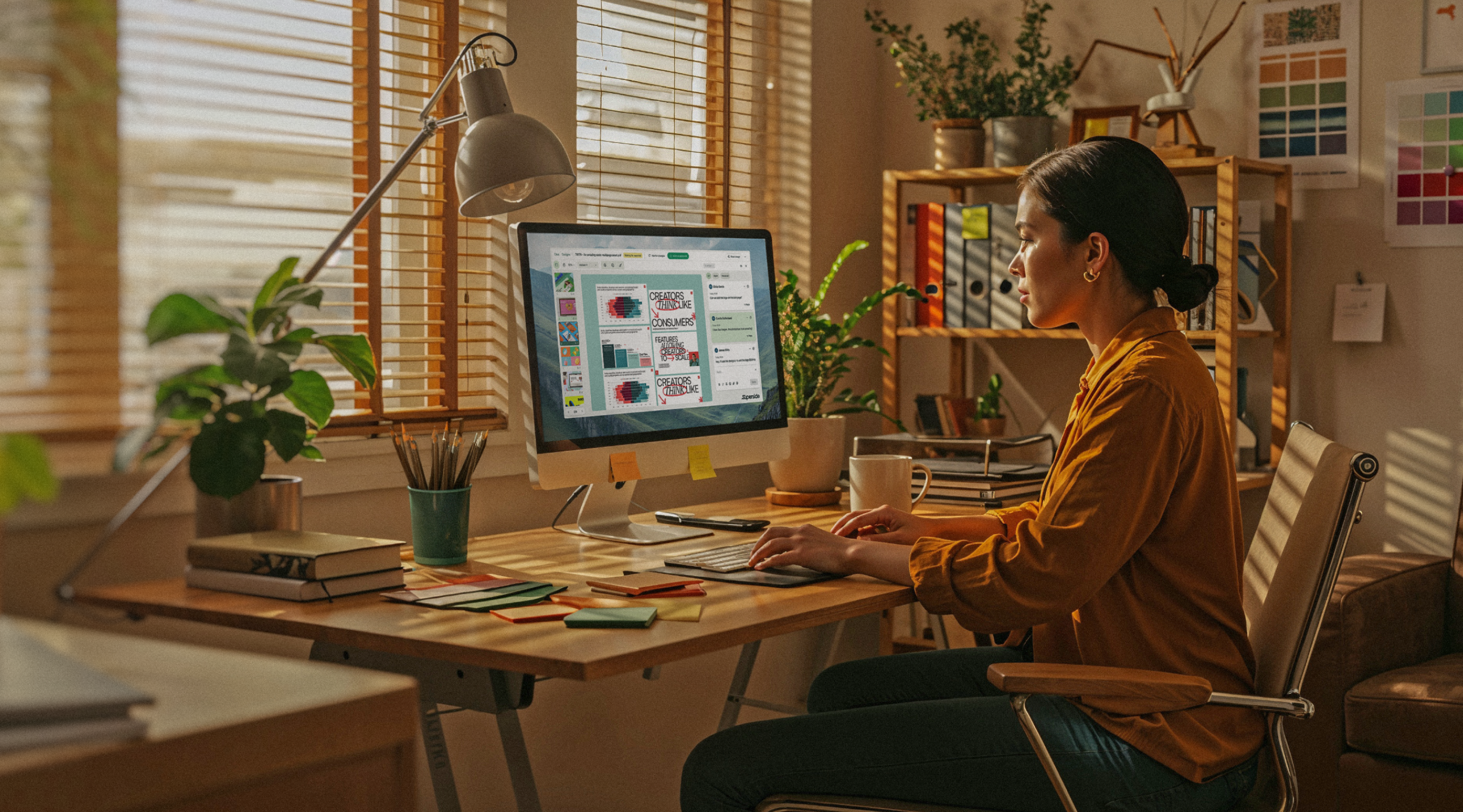Why You Must Balance Customer Feedback and Design Innovation

Two constants pull at every designer during production: customer feedback and design innovation. On the one hand, customer satisfaction is a critical metric of a successful product. On the other hand, you know the world of design may never evolve if you only do what has been done before. And what has been done before is what the typical customer will request — a design similar to what they’ve seen somewhere else.
The world of art is built on this principle: See something and make it your own. But the truly innovative see something and ask why it matters and what happens if it’s done in other ways. They create new styles like Picasso’s portraits or Scher’s typography. And this typically involves design innovation.
Design innovation asks what people need, what technology can create this, and how can we create value from this opportunity. It combines computation thinking, design thinking, maker culture and business to discover not only the proof of concept but also the value, the market and the impact.
It is a call to charge ahead with creativity flowing to solve the world’s problems. But, sometimes, what the world asks for is neither particularly innovative nor valuable, and designers risk losing customer satisfaction by pushing too far forward.
MAYA Principle
Ray Loewry, the father of industrial design, said, “The adult public's taste is not necessarily ready to accept the logical solutions to their requirements if the solution implies too vast a departure from what they have been conditioned into accepting as the norm.” This idea informed Loewry’s MAYA principle.
MAYA stands for “Most Advanced. Yet Acceptable.” Brands like Apple and Google have steadily introduced design innovation to consumers while keeping them (mostly) happy about the changes. From the MAYA principle, you can take a few key lessons to advance design innovation.
Maintain Similarity in Visual Design
Design that attracts a user’s positive attention is, at least for a while, worth maintaining. Drastic changes can leave users with whiplash, causing outcries of “What was wrong with the way it was?” Making minor to no changes to the visual branding while furthering the technical advances can ease a customer’s perception of the changes.
Consider Apple’s iPod. As Apple advanced technology, specifically touchscreens, they maintained the circle pad that users had grown accustomed to. If you owned an iPod, you can probably imagine pushing the buttons up and down, to the left and right, even now. Though the screen grew larger until it overtook the iPod, Apple still maintained the circle, now just the size of a thumbprint, that controlled aspects of the handheld device.
Make Gradual Changes Chosen First by Needs
What drives technological innovation? In most cases, it is feedback on processes that pushes change. Consumers may want changes for aesthetics, user-friendliness and advanced abilities, but what they need may be better systems, faster service or functionality. The most innovative can see what a consumer wants before they demand it and set up what they need to eventually meet that want.
Here we can look at the story of a little online book retailer that could. Jeff Bezos had serious FOMO when it came to the internet boom, and after research, decided to set up shop as an online bookstore. That bookstore has been anticipating customer needs ever since, but the changes have always been gradual in their delivery such as their shipping advances — cheaper shipping, multiple shippers, free shipping, two-day shipping, one-day shipping, and delivery in-home.
Image source: alykat via Compfight
Ensure Ease of Use
The adage, “If you have to explain it, it’s no good” can be applied to design innovation too, though perhaps not as harshly. Let’s consider saying, “If you have to explain it, it’s too complex.” People need to be able to look at the design and get it, so they can engage with it, decide how they feel about it and, ultimately, make a buying decision.
This approach to buyer empathy, which can move customers toward innovation instead of scaring them away, is founded in psychology, and specifically in Vygotsky’s zone of proximal development which shows that there are some things people can learn without help and some things that require education. The MAYA principle suggests design should remain in the “learn without help” zone when delivering something new.
Think about the now-famous PR stunt by IHOP. When they changed to IHOb in 2018 to promote their new line-up of burgers, people didn’t get it at first. Confused consumers took to social media to make jokes about the new name, and IHOP’s competition even got in on the teasing. When they reverted, everyone rejoiced, but when the dust settled, the pancake chain did not create a significant increase in the company's purchase consideration.
Image source: Michael Dunker / IHOP
Innovate While Listening to Customers
You can be a designer who sells or you can be an artist who doesn’t. That may sound harsh, but the only real difference is the ability of the designer to balance customer feedback with his or her innovative work. Being an artist who sells depends on creating works that people emotionally connect with but also financially invest in.
Yes, you can innovate while listening to your customers. As an example, we can point to the Sonic the Hedgehog debacle from 2019. Jumping on the bandwagon of updating graphics, using advanced CGI and delivering the gaming experience to the big screen, Paramount and Sega began development of a Sonic the Hedgehog movie. When the final design of Sonic was complete and shared with the world, fans lost it—and not in a good way.
Image source: Still from Official Trailer
So, Paramount did like any other big Hollywood studio that had just invested millions of dollars into a project. They ignored the outcry, shirked the idea that customers know what they want, and pushed their design into theaters.
Wait. That’s not at all what happened.
In reality, Paramount and Sega listened to the criticism,decided to invest time and money into a redesign and pushed the release date back three months. Whether their commitment to pleasing consumers pays off or not is yet to be determined, but Sonic fans were thrilled, and everyone was pleasantly surprised to have been heard.
Image source: @Castleinferno, @LiKovacs and @StillJustBarry via Twitter
Design is Compromise
Brian McKenna, designer and customer experience director, wrote, “Design is hard. We put a lot of effort into coming up with concepts...as much as we would like it, we know that not every little thing that we come up with will be implemented...At some point, we will all be asked to take what we designed and compromise to some new solution.”
Ultimately, we have to acknowledge the symbiotic relationship between designer and customer—one has a creative vision to deliver to the world, one has a product to buy. Without each other, the customer’s attention may never be captured, and the designer’s work may be forgotten.
So push the boundaries. Drive forward new design concepts. But remember: finding the right balance between what the customer wants and the future of design could make the difference between losing customer satisfaction and your design inspiring millions of designers coming up behind you.
You may also like these

10 top outsourced design services to hire in 2025
Struggling to keep up with the volume and variety of design work in 2025? You’re not alone. Today’s marketing and creative teams face relentless demand for high-quality design across more channels than ever, from social and video to landing pages, presentations and motion graphics.When internal teams hit capacity, critical projects get delayed, quality can dip, and strategic goals get lost in the shuffle of urgent requests. That's why more enterprises are rethinking how they access design—choosing partners who can extend their creative capacity without adding operational headaches.Broadly, there are three ways companies can scale design:Hire freelancers or agencies. Flexible but often slow, unpredictable and hard to manage at scale. Costs can balloon with complex projects or tight timelines.Expand in-house teams. Delivers control but comes with recruitment challenges, overhead and the risk of teams getting siloed or burned out.
Maximizing Profit: The Impact of Design on Business Strategy
Design has never been more on demand.As the first interaction for most customers with businesses, it’s just everywhere—from the homepage of your favorite website to the product packaging your new sneakers arrived in.With smartphones, tablets and digital interfaces at every turn, every design element now affects nearly every consumer touchpoint during the customer journey.That’s why the smartest companies are investing in good design systems for all their inputs—and for a good reason: It’s good for the bottom line.A 2018 McKinsey report, “The Business Value of Design,” put the impact of design on your bottom line with data: Over five years, companies that invested in good design had 32% more revenue and 56% more total returns to shareholders.
The Ultimate 5-Step Graphic Design Process
For any design team, having an established graphic design process will lead to better designs, higher output and most importantly, remove a lot of potential frustration.The process of starting a graphic design project has changed drastically over the years. Now, AI-powered design is the driving force behind concept development and the design thinking process, which makes it necessary to think about the different perspectives infused into each design stage.If you’re leading graphic designers or looking to streamline the process, then let’s take a look at the 5 most essential steps of the graphic design process.The Importance of a Structured Design ProcessGraphic design is an intricate blend of creativity and strategy, requiring a structured approach to ensure that the final product not only looks stunning but also effectively communicates the intended message.








